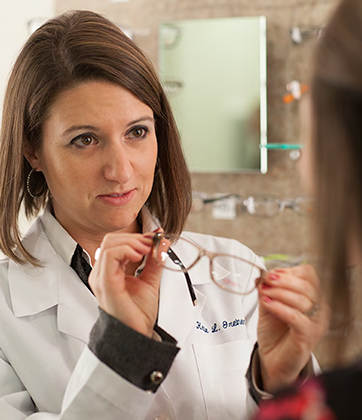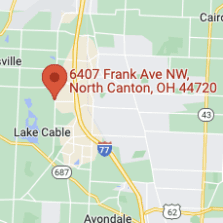What Is Amblyopia?
Amblyopia, also known as lazy eye, is decreased vision in an eye that did not develop normal sight. This eye condition affects infants and children and causes lost or decreased vision. It is not correctable by glasses or contact lenses and is not due to any eye disease. Amblyopia occurs when the brain does not fully acknowledge the images seen by the amblyopic eye. Amblyopia almost always affects only one eye but may cause a reduction of vision in both eyes. It is estimated that three percent of children under six have some form of amblyopia, and more than 200,000 cases of amblyopia are diagnosed each year.
What Causes Lazy Eye?
 During the critical developmental period from birth to 6 years, both eyes must receive clear images. Anything that interferes with clear vision in either eye during this time can cause amblyopia. The most common causes of amblyopia are:
During the critical developmental period from birth to 6 years, both eyes must receive clear images. Anything that interferes with clear vision in either eye during this time can cause amblyopia. The most common causes of amblyopia are:
- Constant Strabismus (constant turn of one eye)
- Anisometropia (different vision/prescriptions in each eye)
- Blockage of an eye due to trauma, lid droop, or congenital cataract
If one eye sees clearly and the other sees a blur, the good eye and brain will ignore the blurry eye, and it will never develop normally. If left untreated, amblyopia will result in a permanent decrease of vision that can not be corrected with glasses, contact lenses, or surgery.
How To Know If You Have a Lazy Eye?
Since amblyopia usually occurs in only one eye, many parents and children may be unaware of the condition. It is essential that parents take their child to an eye doctor for a comprehensive vision examination when the child is six months old. Many children that could have been helped go undiagnosed until a much later age.
Treatment for Lazy Eye
 Early treatment is usually simple:
Early treatment is usually simple:
- Glasses
- Eye Drops
- Vision Therapy (eye training)
- Patching the eye
Detection and correction before the age of two offer the best chance for a cure, although amblyopia has been successfully treated up to the age of 17.
Improvements are possible at any age, but early detection and treatment offer the best outcome. If not detected and treated early in life, amblyopia can cause a permanent loss of vision.
Amblyopia causes more visual loss for people under the age of 40 than injuries and diseases combined.














